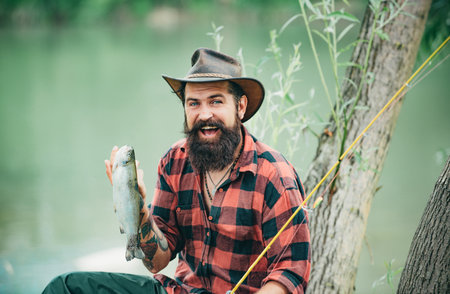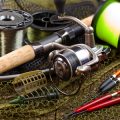The Importance of Catch and Release in American Fly Fishing
In the United States, catch and release has become a cornerstone of modern fly fishing culture, reflecting a deep commitment to conservation ethics and responsible angling. The widespread adoption of this practice is driven by the need to sustain fish populations, protect native species, and ensure that future generations can enjoy the sport just as much as those who came before. Catch and release not only supports the ecological balance of rivers and streams but also aligns with the values held by many American anglers—respect for nature, stewardship of public lands and waters, and a sense of community responsibility.
Why Catch and Release Matters
Catch and release is more than just letting a fish go; it represents an ethical choice rooted in science and tradition. Overfishing, habitat loss, and environmental pressures have threatened many native fish species across the country. By practicing catch and release, anglers play a direct role in conserving these species, helping to maintain healthy population levels and preserve genetic diversity within wild fish stocks.
| Key Reasons for Catch and Release | Description |
|---|---|
| Conservation Ethics | Promotes responsible use of natural resources and supports ecosystem health. |
| Sustaining Fish Populations | Ensures that fish populations remain robust for recreational fishing now and in the future. |
| Protecting Native Species | Prevents overharvesting of vulnerable or endangered native fish. |
| Community Stewardship | Fosters a culture of respect and care among anglers toward public fisheries. |
Cultural Significance in American Angling
Across America’s diverse fisheries—from the trout streams of Montana to the steelhead rivers of Oregon—catch and release is woven into the fabric of fly fishing communities. Regulations often mandate it in sensitive areas or for specific species, but voluntary compliance remains high due to shared values. This collective effort helps ensure that wild fisheries continue to thrive amidst increasing recreational pressure.
2. Selecting Proper Gear for Ethical Catch and Release
Choosing the right gear is a cornerstone of ethical catch and release in American fly fishing. The selection of tackle not only impacts your fishing experience but also plays a vital role in safeguarding fish health and survival after release. American anglers are increasingly mindful of their equipment choices, aiming to minimize harm while maximizing fish welfare.
Barbless Hooks: A Standard for Conservation
Many fly fishers across the United States opt for barbless hooks, or flatten the barbs on standard hooks. Barbless hooks make hook removal easier, reduce handling time, and lower the risk of injury to fish. This simple adjustment supports higher post-release survival rates—a key goal in modern American angling culture.
Matching Rod Weight to Target Species
Selecting an appropriate rod weight is another important consideration. Using a rod that is too light may prolong the fight, exhausting the fish and reducing its chance of survival upon release. Conversely, a rod that matches the size and strength of your target species allows you to land fish quickly and efficiently, minimizing stress and potential harm.
| Target Species | Recommended Rod Weight |
|---|---|
| Trout (Small Streams) | 2-4 wt |
| Bass | 6-8 wt |
| Steelhead/Salmon | 7-9 wt |
| Pike/Musky | 9-10 wt |
Fish-Safe Landing Nets: Protecting Slime Coats and Scales
The use of proper landing nets is now widely regarded as best practice throughout American fly fishing communities. Nets with rubberized or knotless mesh help protect the delicate slime coat and scales of fish, preventing injuries and infections. Avoid using nets with rough or abrasive material, as they can cause significant damage even during brief contact.
Tackle Checklist for Responsible Anglers:
- Use barbless hooks whenever possible.
- Select a rod weight suited to your target species for faster landing times.
- Carry a landing net made from fish-friendly materials.
- Handle fish gently and avoid excessive contact with dry hands or clothing.
- Keep all gear organized to ensure efficient catch and release procedures.
By adhering to these gear guidelines rooted in American fly fishing standards, anglers can enjoy their sport while actively contributing to conservation efforts. Making conscious decisions about tackle ensures that future generations will continue to experience healthy fisheries across the United States.
![]()
3. Handling Fish Responsibly: Techniques and Tips
Proper fish handling is essential to successful catch and release, especially in America’s renowned trout streams and bass lakes. By minimizing stress and injury during landing, unhooking, and holding fish, anglers can help ensure high survival rates after release. Below are best practices tailored for popular American trout (such as rainbow, brown, and brook trout) and bass (largemouth and smallmouth) fisheries.
Landing the Fish
- Use Barbless Hooks: Barbless hooks make unhooking easier and reduce tissue damage.
- Keep Fights Short: Use appropriate tackle to land fish quickly, minimizing exhaustion.
- Wet Your Hands: Always wet your hands before touching fish to protect their slime coat, crucial for disease prevention.
- Net Selection: Use a rubber or knotless mesh net to prevent fin and scale injuries.
Unhooking Safely
- Tools: Carry forceps or pliers for quick hook removal.
- Gentle Technique: Remove the hook carefully; if deeply embedded, cut the line close to the hook rather than forcing removal.
- No Squeezing: Hold fish gently but securely; avoid squeezing which can damage internal organs.
Comparison of Best Practices: Trout vs. Bass
| Technique | Trout Fisheries | Bass Fisheries |
|---|---|---|
| Landing Time | Aim for under 1 minute | Aim for under 2 minutes |
| Holding Method | Support belly with both hands; avoid gill contact | Lip grip acceptable for largemouths; support body for smallmouths |
| Water Temperature Sensitivity | Critical below 68°F; avoid fishing when warmer | Tolerant up to 75°F; still minimize air exposure |
| Main Stressor | Lactic acid build-up from long fights | Mishandling jaws or excessive time out of water |
Holding and Releasing Fish Properly
- Minimize Air Exposure: Keep fish in the water whenever possible; never more than 10-15 seconds out of water for photos.
- Revive If Necessary: Hold fish upright facing into current until it swims away under its own power.
- Avoid Hot Surfaces: Never place fish on dry or hot surfaces such as rocks or docks.
- Avoid Contact with Gills and Eyes: These areas are extremely sensitive—handle only around the midsection or lower jaw (for bass).
The “Grip & Grin” Photo: Do’s and Don’ts
- Do: Prepare camera before lifting fish, support weight evenly, keep fish over water.
- Don’t: Prolong photo sessions or hold fish vertically by the jaw (especially with trout).
By following these responsible handling techniques, American fly anglers can enjoy memorable days on the water while safeguarding the future of beloved fisheries across the country.
4. Timing Matters: Water Temperature and Release Strategies
Water temperature plays a critical role in the survival of fish after catch and release, particularly in American fly fishing where species like trout are highly sensitive to heat and oxygen levels. As water warms, its ability to hold dissolved oxygen decreases, causing additional stress for released fish and increasing mortality rates. Understanding how temperature impacts fish health is essential for every ethical angler, especially during summer or in regions prone to drought.
Why Water Temperature Matters
Fish such as trout and salmon thrive in cold, well-oxygenated water. When temperatures rise above safe thresholds, these species become lethargic, stressed, and far less likely to recover from the rigors of being caught. Prolonged handling or delayed release in warm conditions can be fatal. Therefore, timing your fishing trips and knowing when to quit for the day can make a significant difference in conservation efforts.
Regional Safe Angling Guidelines
Different regions across the United States have varying climate patterns and fish species, so its important to follow local guidelines for safe angling temperatures. The table below outlines recommended maximum water temperatures for catch-and-release fly fishing in popular American regions:
| Region | Main Species | Max Safe Water Temp (°F) | Recommended Action |
|---|---|---|---|
| Northeast (e.g., NY, PA) | Brook & Brown Trout | 68°F | Stop fishing above this temp; focus on early morning hours |
| Rocky Mountains (e.g., CO, MT) | Rainbow & Cutthroat Trout | 65°F | Avoid midday fishing; seek colder headwaters or spring creeks |
| Pacific Northwest (e.g., WA, OR) | Steelhead & Salmon | 64°F | Cease catch-and-release at or above threshold temps; check local advisories |
| Southeast (e.g., NC, TN) | Wild & Stocked Trout | 66°F | Limit fishing to cold tributaries or higher elevations during hot months |
Quick Release Strategies for Hot Weather
- Monitor Temperatures: Carry a reliable stream thermometer and check water temps throughout the day.
- Fish Early or Late: Target cooler periods at dawn or dusk when water holds more oxygen.
- No Hero Shots: Skip extended photo sessions in warm weather to minimize air exposure.
- Ditch the Net if Needed: In dangerously warm water, consider skipping netting entirely—unhook fish quickly while still submerged.
- Pace Yourself: If you notice several fish struggling on release, it’s time to call it quits for the day.
Caring for Fish Is Caring for Our Fisheries
Your choices on when and how you fish directly affect the health of America’s rivers and streams. By respecting water temperature guidelines and adapting your release strategies, you’ll help ensure robust wild fisheries for generations of anglers.
5. Regulations and Community Values in US Catch and Release Waters
Effective catch and release practices in American fly fishing are deeply influenced by a combination of state and federal regulations, as well as the values shared by local angling communities. Understanding these rules and embracing community-driven stewardship is essential for maintaining healthy fisheries and sustaining the sport for future generations.
State and Federal Regulations
Catch and release waters across the United States are governed by a patchwork of regulations that vary depending on the state, waterway, and even species of fish targeted. Federal agencies like the U.S. Fish and Wildlife Service collaborate with state wildlife departments to set guidelines aimed at conserving native fish populations. Key elements regulated include fishing seasons, bait restrictions, gear limitations, and mandatory release zones.
| Regulation Type | Example | Purpose |
|---|---|---|
| Bait Restrictions | Artificial lures only in designated streams (Montana) | Minimize deep hooking and injury to fish |
| Gear Limitations | Barbless hooks required (California) | Facilitate safer, quicker releases |
| Seasonal Closures | No fishing during spawning periods (Colorado) | Protect vulnerable spawning populations |
| Mandatory Release Zones | Certain stretches of rivers designated “catch and release only” (Pennsylvania) | Ensure long-term sustainability of wild trout stocks |
Cultural Attitudes Among American Anglers
The philosophy of catch and release has become increasingly embedded in American fly fishing culture over recent decades. Many anglers view it not only as a regulation but as a personal ethic—a way to give back to the resource they cherish. This outlook is often reinforced through education, social media, and peer influence within angling circles. Practicing proper fish handling, promoting selective harvest where necessary, and sharing conservation success stories are all part of this evolving mindset.
The Role of Local Fly Fishing Groups in Advocacy
Grassroots organizations play a vital role in advancing both awareness and adherence to best practices in catch and release fishing. Local chapters of national groups like Trout Unlimited or regional fly fishing clubs regularly participate in river cleanups, habitat restoration projects, and educational workshops. These groups also act as advocates—working with regulatory agencies to refine policies based on scientific research and field experience.
Community-Driven Initiatives: Examples Across the US
| Organization/Group | Main Activity | Impact on Catch & Release Ethics |
|---|---|---|
| Trout Unlimited (National) | Advocacy & habitat restoration campaigns | Improved stream health, policy influence at state/federal levels |
| Fly Fishers International (Various Chapters) | Education & youth outreach programs | Cultivation of ethical angling practices among new generations |
| Local Riverkeeper Groups (e.g., Colorado Riverkeeper) | Citizen science & monitoring enforcement issues | Enhanced compliance with catch and release regulations through reporting and awareness efforts |
The interplay between formal regulations, evolving cultural attitudes, and grassroots advocacy creates a robust framework that supports responsible catch and release fly fishing across America. By staying informed about local laws and actively participating in the angling community, every fly fisher can help protect our nation’s treasured waters for years to come.
6. Education and Stewardship: Sharing the Catch and Release Ethic
Building a sustainable future for American fly fishing hinges on education, stewardship, and fostering a community dedicated to ethical practices. Mentoring new anglers is at the heart of this effort. Experienced fly fishers play a crucial role in passing down knowledge about proper catch and release techniques, local regulations, and the importance of respecting both fish populations and their habitats. This mentorship not only helps novices learn the technical aspects of fly fishing but also instills a sense of responsibility toward conservation.
Another key component is active participation in stream restoration projects. Many American fly fishing organizations and clubs organize volunteer events focused on habitat improvement, such as removing invasive species, restoring native vegetation, or improving stream access. These efforts directly contribute to healthier fisheries and create opportunities for anglers to give back to the resources they enjoy. By getting involved, anglers demonstrate their commitment to protecting rivers for future generations.
Promoting a catch and release mindset within the community involves more than just personal practice—it means advocating for these values through outreach, education, and public engagement. Anglers can influence others by sharing stories of successful releases, supporting science-based management policies, and encouraging peers to adopt ethical practices.
Mentorship: Passing Down Values
| Mentorship Activity | Benefits to New Anglers | Benefits to the Community |
|---|---|---|
| On-the-water demonstrations | Hands-on learning of proper handling and release techniques | Improved overall fish survival rates |
| Workshops & seminars | Understanding regulations and local conservation issues | Stronger compliance with best practices |
| Storytelling & shared experiences | Cultural connection to the sport’s ethics | Preservation of fly fishing traditions |
Stream Restoration Involvement
Engagement in habitat restoration not only benefits fish populations but also strengthens ties among anglers. Local clubs often coordinate:
- Stream clean-ups
- Erosion control projects
- Native plantings along riverbanks
- Educational programs for youth groups
The Ripple Effect: Spreading Awareness
The collective effort of mentoring, volunteering, and advocacy has a ripple effect throughout the American fly fishing scene. By nurturing an ethic of catch and release, today’s anglers help ensure healthy fisheries—and vibrant communities—for tomorrow. Each action taken reinforces a culture where stewardship is as important as skill, making conservation integral to the American fly fishing experience.


